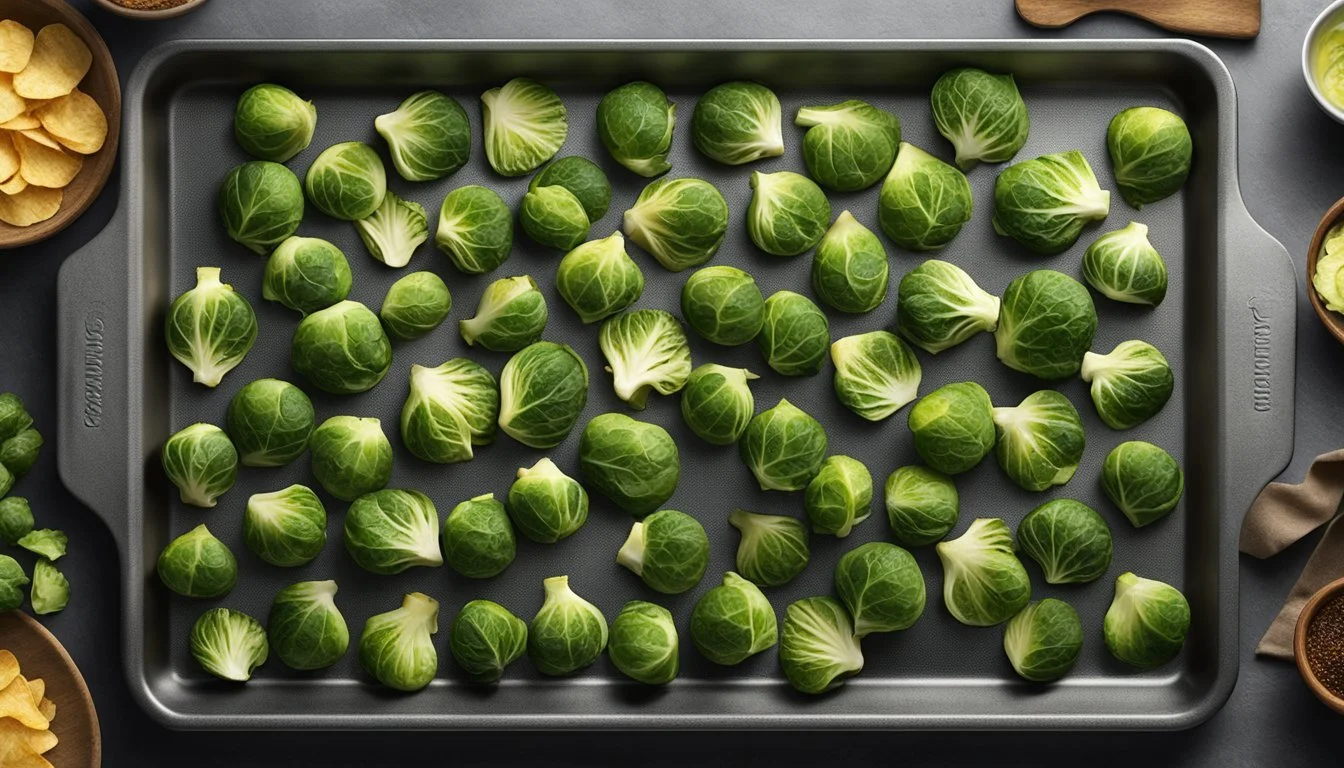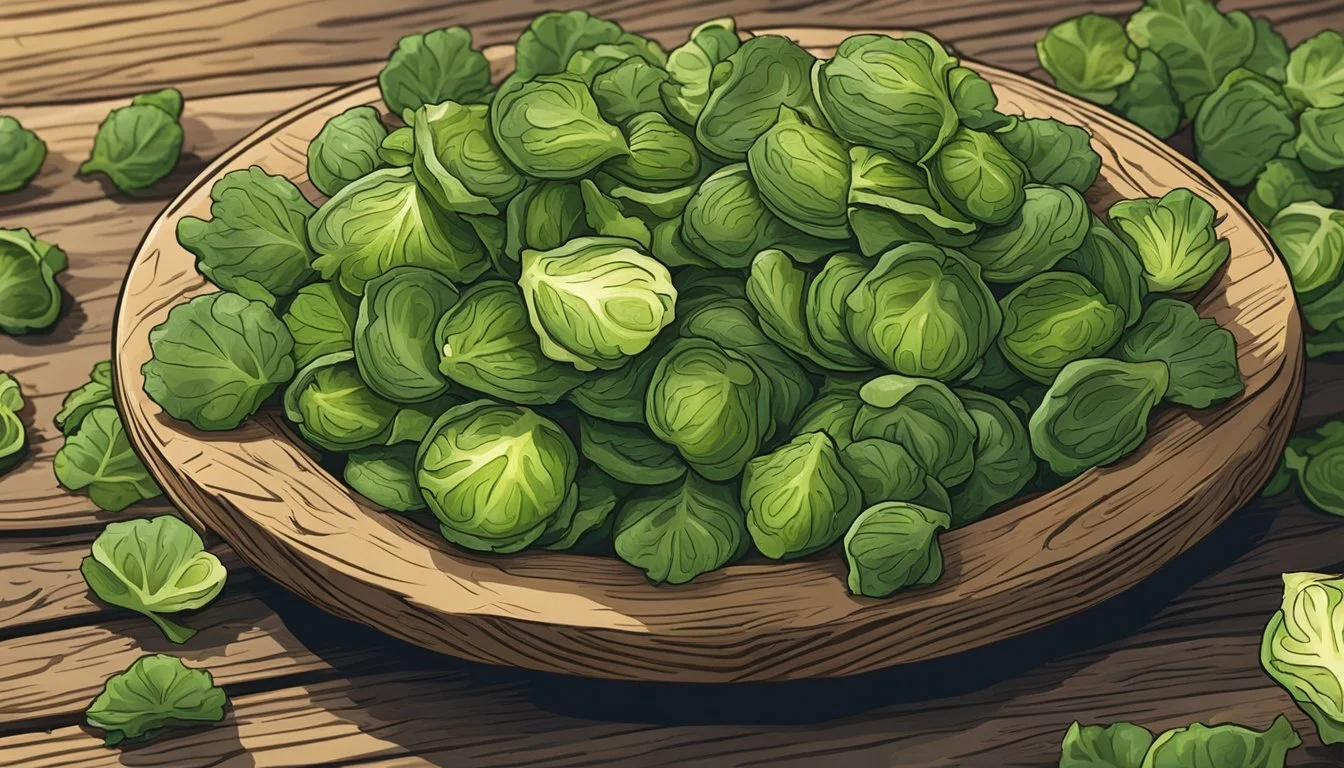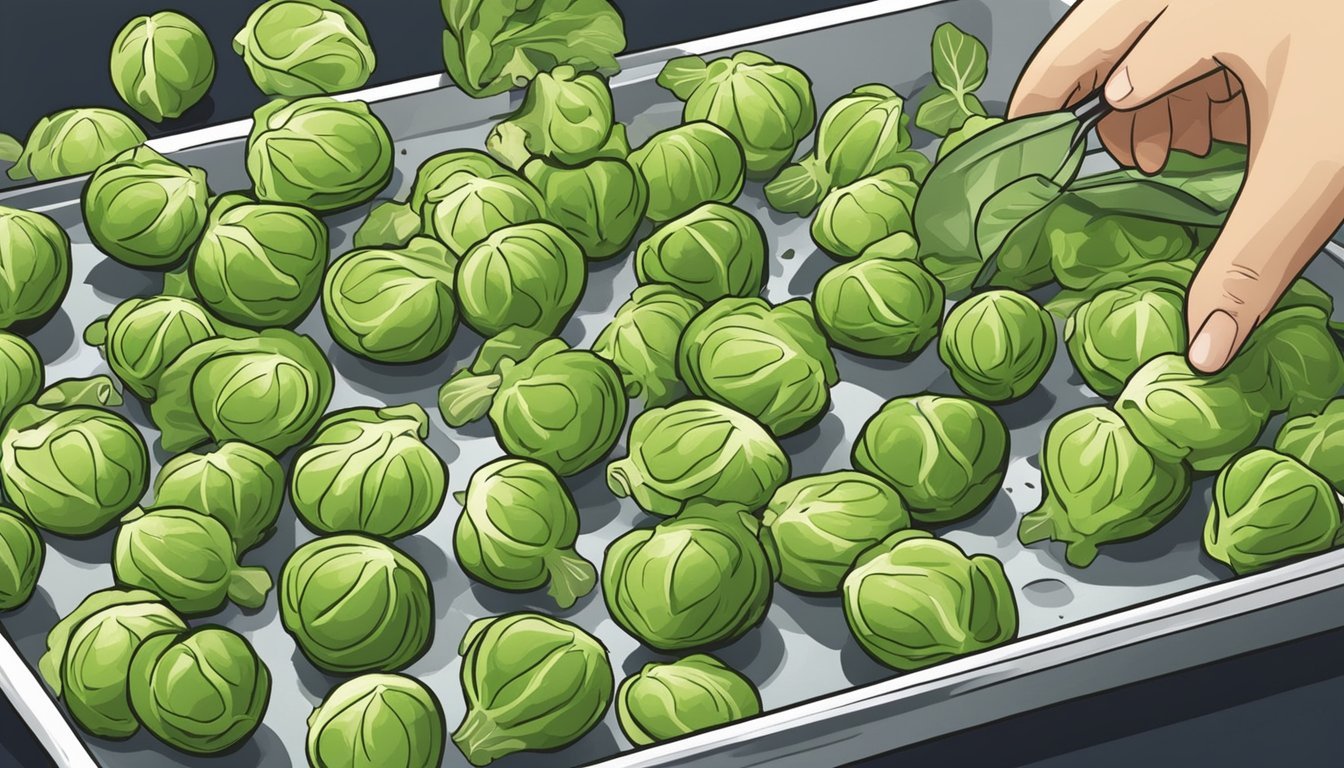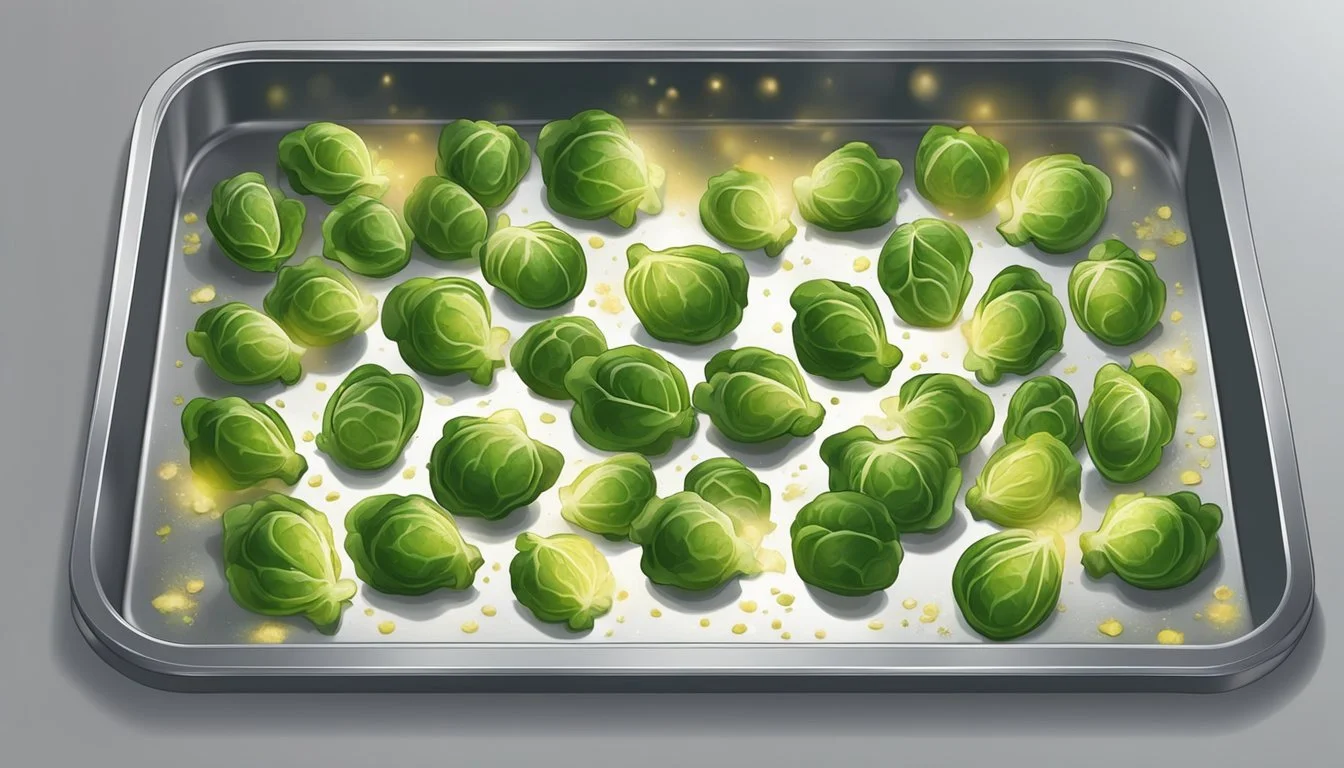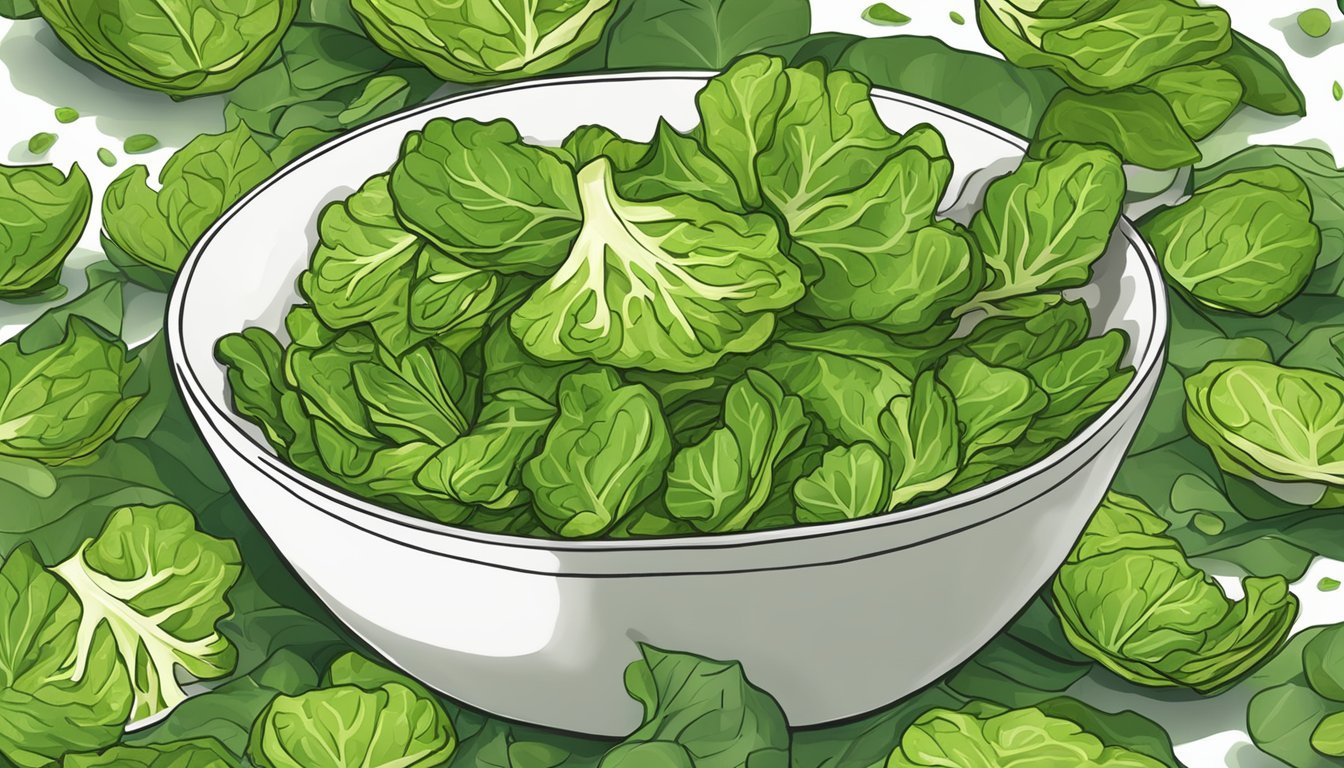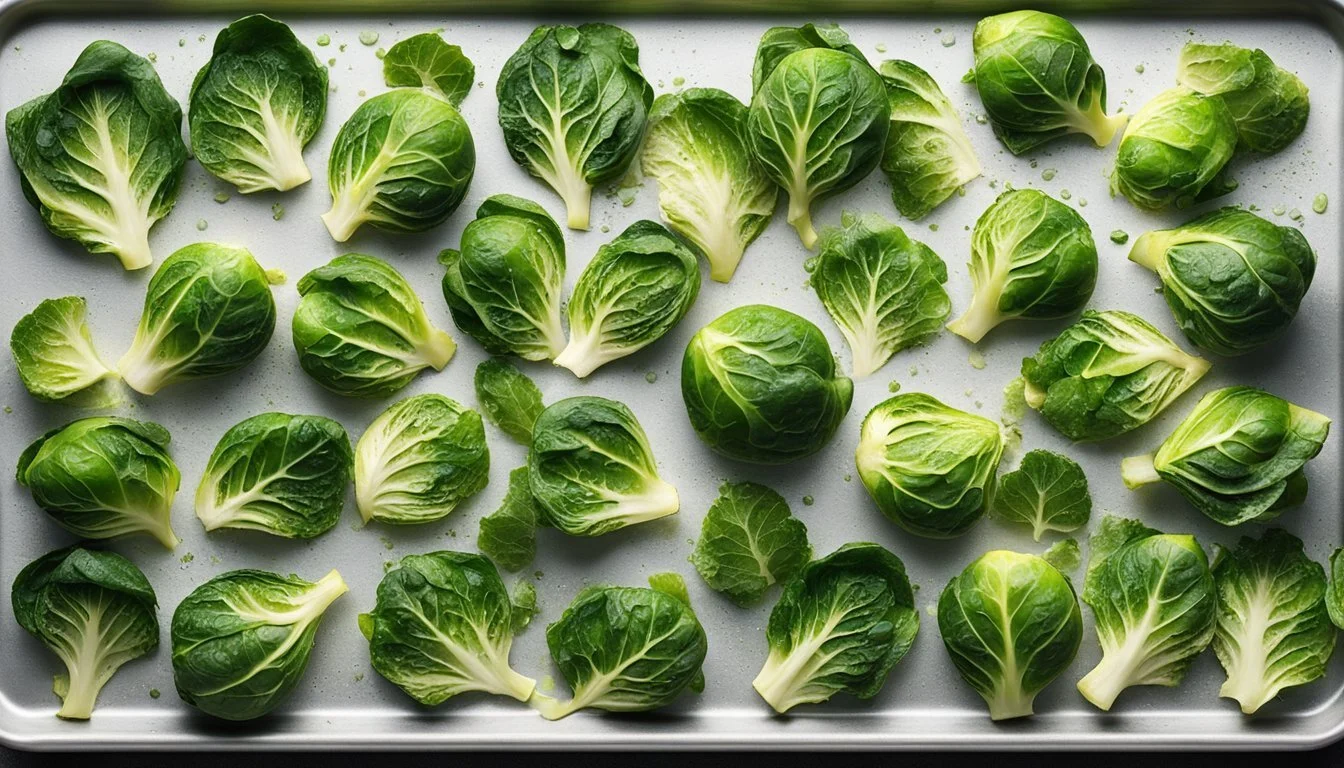Brussels Sprout Leaf Chips
An Ultimate Guide to a Healthy Crunch
Brussels sprout leaf chips are emerging as a popular snack choice for those looking to enjoy a crispy treat without compromising on nutrition. Unlike traditional potato chips, these leafy green alternatives offer a rich source of vitamins and minerals. Backed by their high fiber content and potent antioxidants, Brussels sprout chips not only curb the craving for a salty crunch but also deliver considerable health benefits.
As the awareness around healthy eating intensifies, inventive ways to incorporate vegetables into the daily diet are on the rise. Brussels sprout chips cater to this shift, providing a snack that is simple to prepare and can be customized with an array of spices and seasonings. They epitomize the synergy of convenience and wholesomeness, making them a suitable option for those pursuing a healthy lifestyle without sacrificing taste.
The preparation process involves slicing the sprouts into thin pieces, tossing them with a touch of oil, and seasoning before baking them to achieve that desirable golden and crispy texture. This snack can be savored guilt-free and serves as a perfect companion to a variety of dips or as a standalone munch. With their crispness and nutty, slightly sweet taste, Brussels sprout leaf chips are redefining snacking norms, steering snack lovers towards a path of health-conscious indulgence.
The Nutritional Profile of Brussels Sprouts
Brussels sprouts, a nutrient-dense vegetable, boast an impressive array of vitamins and minerals, dietary fiber, and a balanced caloric content advantageous for a healthy diet.
Vitamins and Minerals in Brussels Sprouts
Brussels sprouts are an excellent source of vitamin C and vitamin K, crucial for the body's various functions. These vegetables also provide a good amount of vitamin A, which is important for vision and immune health. For minerals, they contain iron, useful for transporting oxygen in the blood; magnesium, pivotal for nerve function; and calcium, essential for bone health. Additionally, Brussels sprouts are rich in manganese and potassium, facilitating numerous body processes including those that maintain healthy bones and blood pressure levels.
Dietary Fiber and its Benefits
The high fiber content in Brussels sprouts is significant for digestive health. Fiber adds bulk to the stool, which helps maintain regular bowel movements and reduces the risk of constipation. It also plays a role in controlling blood sugar levels and may assist in weight management due to its satiating effect, meaning it can help people feel fuller for longer after eating.
Caloric Content and Macronutrients
Brussels sprouts are low in calories but high in protein and fiber, both of which contribute to their satiating properties. A one-cup serving of boiled Brussels sprouts contains approximately:
Calories: 56 kcal
Protein: 4g
Fat: 0.8g
Carbohydrates: 11g
Dietary Fiber: A notable amount
This composition makes Brussels sprouts a beneficial inclusion in a diet aimed at achieving or maintaining a healthy weight. They also provide a moderate amount of folate, important for cell function and tissue growth, making them a supportive food for overall well-being.
Selection and Preparation of Fresh Brussels Sprouts
Preparing Brussels sprouts for a crispy snack involves selecting quality produce and prepping them properly. The reader will learn how to choose the best sprouts, clean and trim them, and prepare them for cooking.
Choosing the Best Brussels Sprouts
When selecting Brussels sprouts, one should look for bright green, firm, and compact heads. The fresher the sprouts, the better the flavor and texture of the chips will be. Leaves that are vibrant and green without yellowing or holes typically indicate healthy, raw vegetables.
Cleaning and Trimming Techniques
Once the best Brussels sprouts are selected, they need to be cleaned properly. They should be rinsed under cold water to remove any dirt or residue. To trim, one cuts off the stem end and removes any blemished outer leaves. Using a sharp kitchen knife can make the trimming process smooth and efficient.
Pre-Cooking Preparation
After cleaning and trimming, the individual leaves are then separated from the head. This can be done by gently twisting them off or cutting them away where they join the core. For those Brussels sprouts being cut, it's essential to use a technique that retains the integrity of the leaves for optimal chip formation.
Cooking Methods for Brussels Sprouts
Brussels sprouts can be transformed into delectable dishes by employing a variety of cooking techniques that not only enhance their flavor but also retain their nutritional value.
Roasting Brussels Sprouts
Roasting brings out the natural sweetness and depth of flavor in Brussels sprouts, making it a preferred cooking method for this cruciferous vegetable. To roast Brussels sprouts:
Preparation: Wash, trim, and slice Brussels sprouts thinly.
Seasoning: Toss with olive oil and your choice of seasoning.
Baking: Spread in a single layer on a baking sheet and roast at 400 degrees Fahrenheit for about 10 to 25 minutes. Keep watch to ensure they become crispy without burning.
The high heat of roasting caramelizes the sprouts' exteriors, providing a contrasting texture to their tender interiors.
Steaming for Optimal Nutrient Retention
Steaming Brussels sprouts is a method that maintains most of the vegetable’s nutrients, making it healthier:
Method: Place Brussels sprouts in a steamer basket over boiling water.
Duration: Steam them for 5 to 7 minutes until they become vibrant green and tender.
Steamed Brussels sprouts can be mixed into salads (What wine goes well with salads?) , used as a side for dishes, or lightly seasoned with salt, pepper, and a drizzle of extra virgin olive oil.
Innovative Brussels Sprouts Recipes
Cooking Brussels sprouts in creative ways, such as integrating them into soups or casserole recipes, can elevate this vegetable's versatility:
Chips: Separate leaves and bake to create crispy chips.
Soups: Simmer Brussels sprouts in broths for a nutritious addition.
Salads: Incorporate both roasted and steamed Brussels sprouts to add texture and flavor.
Casseroles (What wine goes well with casseroles?): Combine with other ingredients and bake for a hearty meal.
Each recipe calls for its own unique type of preparation and seasoning to complement the natural flavors of the Brussels sprouts.
Brussels Sprouts in Diet and Health
Brussels sprouts are highly nutritious leafy greens that fit well into a balanced diet and offer numerous health benefits. Rich in fiber and packed with essential vitamins, they are an ideal choice for those seeking to maintain or improve their health.
Integrating Brussels Sprouts into Your Diet
Incorporating Brussels sprouts into one's diet can be both simple and delicious. They can be roasted, steamed, or sautéed and added to a variety of dishes, such as salads and side dishes. Here are a few methods:
Salads: Shred Brussels sprouts to add a crunchy, nutty flavor to salads.
Snacks (What wine goes well with snacks?): Make crispy Brussels sprout leaf chips by baking the leaves until golden.
Side Dishes: Combine Brussels sprouts with other vegetables such as kale, (What wine goes well with kale?) broccoli, or spinach for a nutritious side.
Brussels sprouts are versatile and can complement many meals, making them a popular addition to a health-conscious diet.
Health Benefits and Disease Prevention
Brussels sprouts are more than just a tasty vegetable; they're also a powerhouse of health benefits.
Nutrient-Rich: They offer a high concentration of vitamins such as Vitamin C and Vitamin K, as well as antioxidants that combat inflammation.
Fiber Content: High in fiber, Brussels sprouts aid in digestion and have been associated with improved blood sugar levels.
Disease Prevention: Their nutrient profile is linked with a decreased risk of several diseases, including heart disease. The consumption of Brussels sprouts has been shown to positively influence blood pressure and cholesterol levels, important factors for heart health.
Anti-inflammatory: The antioxidants found in Brussels sprouts can help reduce the risk of chronic diseases by lowering inflammation in the body.
In summary, as a member of the cabbage family, Brussels sprouts are a superfood that one should consider integrating into their diet for their potential to prevent diseases and contribute to overall health.
Brussels Sprout Leaf Chips Recipe
Crafting a batch of Brussels sprout leaf chips transforms these humble green vegetables into a delectable and nutritious snack. Ideal for health-conscious individuals, these chips offer a convenient serving of leafy greens in a crispy, tantalizing form.
Required Ingredients
Brussels sprouts: About 1 pound, to yield sufficiently large leaves for chipping.
Oil: 2 tablespoons of a high smoke-point oil such as avocado or olive oil for even coating.
Seasonings: Salt and pepper to taste; optional garlic powder, smoked paprika, or chili powder for added flavor.
Additional: For a twist on the classic, consider adding balsamic vinegar or finely chopped herbs for a touch more zest.
Step-by-Step Cooking Instructions
Preparation: Preheat your oven to 400°F (200°C). Trim the stem ends of the Brussels sprouts, and gently remove the leaves.
Seasoning: In a large bowl, combine the Brussels sprout leaves with oil and seasonings. Toss until leaves are well coated.
Baking: Line a baking sheet with parchment paper. Spread the leaves in a single layer, ensuring they don't overlap for even cooking.
Cooking: Bake in the preheated oven for about 10-12 minutes or until leaves are crispy and have golden brown edges.
Monitoring: Keep a close eye to avoid burning, as leaf thickness may cause variations in cooking time.
Serving Suggestions and Pairings
Salads: Complement a shaved Brussels sprouts salad with these chips for a delightful crunch.
Nuts and Fruit: Pair with pecans and sliced apples or dates for a sweet and savory snack mix.
Greens Mix: Mix with other crispy greens like kale or collard greens for a chips medley.
Dips: Serve alongside a garlic or herb-infused dip for a flavor-packed snack.
These chips are not just a tasty treat but are laden with nutrients, making them a smart choice for a snack or a garnish on salads and side dishes. Whether it is a casual movie night or a sophisticated addition to a dinner party, Brussels sprout leaf chips stand out with their rich, green hue and satisfying crunch.
Additional Ways to Enjoy Brussels Sprouts
Brussels sprouts offer versatility in the kitchen beyond being transformed into delightful chips. They can be incorporated into an array of dishes that can enhance their flavor while providing nutritional benefits, such as being high in zeaxanthin and lutein, which are known for supporting eye health and potentially reducing the risk of macular degeneration and cataracts.
Salads and Slaws with Brussels Sprouts
Brussels sprouts can be a crunchy, nutritious addition to salads and slaws. For a fresh twist, try them raw by thinly slicing and adding them to a kale salad, giving a depth of textures and flavors. Toss the Brussels sprouts with crisp lettuce, creamy beans, and a tangy vinaigrette to create a fulfilling meal. Incorporate boiled Brussels sprouts into a warm salad paired with pecans, which add a subtle sweetness and crunch.
Kale and Brussels Sprout Salad:
Thinly sliced raw Brussels sprouts
Add-ins: Shaved parmesan, toasted nuts, dried cranberries
Brussels Sprout Slaw:
Shredded Brussels sprouts
Mixed with: Carrots, red cabbage, and a light dressing
Optional: Sprinkle with roasted seeds for extra texture
Creative Concoctions Beyond Chips
Brussels sprouts can be utilized in various creative and healthful ways that may surprise those who are used to more traditional preparations. Incorporate purple Brussels sprouts for a vibrant color and slightly sweeter taste in smoothies to add nutrition without overpowering the fruit flavors. The antioxidants found in these cruciferous vegetables can contribute to a balanced diet when creatively integrated into different meals.
Brussels Sprout and Bean Combination:
Sauteed Brussels sprouts mixed with flavorful beans
Seasoned with: Herbs, a hint of garlic, and topped with aged cheese
Purple Brussels Sprout Smoothie:
Blend steamed purple Brussels sprouts with:
Fruits: Berries, banana, and a splash of almond milk for creaminess
Storing and Preserving Brussels Sprouts
Brussels sprouts, known for their nutrient density, are often a winter staple. Proper storage and preservation are crucial to maintaining their freshness and flavor before they are transformed into delicious snacks such as crispy leaf chips.
Proper Storage Techniques
To maximize freshness, store Brussels sprouts in the refrigerator. One should place unwashed and untrimmed Brussels sprouts in a plastic bag and then in the crisper drawer to maintain optimal humidity. If any leaves are yellowed or wilted, they should be removed before storage. Storing Brussels sprouts properly ensures they stay fresh longer, making them readily available for use in the kitchen.
Extending Shelf Life through Preservation
When there's a need to preserve Brussels sprouts for an extended period, blanching and freezing are recommended. To do so:
Wash Brussels sprouts thoroughly to remove dirt.
Trim any damaged leaves with a knife or food processor.
Blanch the sprouts in boiling water for about 3 minutes until bright green.
Transfer immediately into an ice water bath to halt cooking.
Drain well, then pat dry with paper towels.
Freeze the prepped sprouts in a single layer on a baking sheet before transferring them to airtight containers or freezer bags.
This preservation process retains the Brussels sprouts’ vibrant color and healthy nutrients, ensuring they are preserved with their natural flavors intact. When the colder season approaches, this method allows one to enjoy Brussels sprouts well beyond their typical shelf life, providing a resourceful way to reduce food waste and extend their culinary applications.
Frequently Asked Questions About Brussels Sprouts
What are Brussels sprouts and how are they related to other leafy greens?
Brussels sprouts are a member of the cruciferous vegetable family, which includes broccoli, cauliflower, kale, and cabbage. They are a compact and miniature version of cabbage and share a similar flavor and texture with its relatives, curly kale and collard greens.
Are Brussels sprouts considered a superfood?
Yes, Brussels sprouts are often considered a superfood due to their high nutrient content, which includes vitamins C and K, fiber, and antioxidants.
How can you incorporate Brussels sprouts into snacks?
One can create a crispy, nutritious snack by making Brussels sprout leaf chips. The outer leaves are separated, seasoned, and then either baked or air-fried until they achieve a crisp texture.
What is the best way to prepare Brussels sprouts to retain their nutrients?
The best way to retain the maximum nutrients in Brussels sprouts is to cook them for a short period. Roasting or air-frying the leaves until they are just crispy will preserve their vitamin content better than overcooking them.
Can you eat Brussels sprouts if you're on a diet?
Brussels sprouts are an excellent addition to a diet, as they are low in calories but high in fiber and nutrients, which can help in feeling full and satisfied.
Nutrient Beneficial For Vitamin C Immune system Vitamin K Bone health Fiber Digestive health
Remember, like all cruciferous vegetables, Brussels sprouts can be easily integrated into a well-balanced diet and contribute to overall health and wellness.
Tips and Tricks for Perfect Brussels Sprout Leaf Chips
Preparing Brussels sprout leaf chips is a culinary art that promises both a satisfying crunch and a nutritious snack. The following tips ensure perfectly crispy chips with delightful flavors, minus the excess calories and unhealthy fats.
Achieving the Perfect Crunch
Temperature: Baking at 400°F (200°C) is optimal for achieving a crisp texture. The high heat helps to remove moisture quickly, avoiding soggy leaves.
Baking Time: Thinner leaves require about 10-12 minutes, while thicker ones may need 20-25 minutes. Presence of charred edges indicates that it's time to remove them from the oven.
Doneness Temperature Time Light Crisp 350°F (177°C) 10-12 minutes Full Crisp 400°F (200°C) 20-25 minutes
Single Layer: Arrange the leaves in a single layer on a baking sheet lined with parchment paper to ensure even roasting.
Turning: Halfway through baking, turn the leaves over to ensure an even crispness on both sides.
Flavor Enhancements and Variations
Seasoning Mix: Combine sea salt and cracked black pepper for a classic taste or add garlic for an aromatic twist. Seasonings rich in Vitamin B, such as nutritional yeast, can be sprinkled on top for a cheesy flavor without the added fat.
Classic Seasoning Optional Additions Sea Salt Garlic Black Pepper Nutritional Yeast
Healthy Fats: Drizzle a small amount of olive oil before roasting to add richness and help the seasoning adhere to the leaves without increasing the fat content significantly.
Vinaigrette: After baking, lightly toss the chips in a vinaigrette for a zesty taste; this adds flavor without excessive calories or sugar found in commercial dressings.
Diverse Add-Ins: Experiment with spices like smoked paprika or cumin. For a savory twist, pair with finely chopped bits of sautéed ham or incorporate mung bean or black bean powder to enhance the protein content.
The Role of Brussels Sprouts in Culinary Traditions
Brussels sprouts have emerged from their reputation as a disliked vegetable by some to take a proud place in diverse dishes worldwide. Recognized for their versatility, they add a nutritious green touch to meals, while their unique flavor complements many ingredients, from bacon to pesto.
Brussels Sprouts in Global Cuisines
It's widely known that Brussels sprouts have roles in the cuisines of many cultures. In Italy, they might be sautéed with garlic and merged with pesto to adorn a pasta dish. Asian cuisines often incorporate them into stir-fries, benefiting from their capacity to absorb flavors. Brussels sprouts also appear roasted or steamed, gracing dishes as a hearty, green side.
The vegetable is prized for its adaptability to various cooking methods, which includes being transformed into thin, crisp chips. These chips can offer a lighter alternative to traditional potato chips, with the added benefits of nutrients and fiber.
Holiday Dishes and Brussels Sprouts
Brussels sprouts are a staple in holiday feasts, particularly in Western countries during the Thanksgiving and Christmas seasons. They are often prepared by roasting with chestnuts or bacon to create a dish that is rich in flavor and festive in appearance. Moreover, Brussels sprouts can be found in holiday casseroles, combined with cream and a crunchy topping, providing a comforting balance to the casserole's richness.
In salad applications, raw or lightly blanched Brussels sprout leaves can add a fresh, crispy dimension to winter salads, often tossed with dried fruits, nuts, and a tangy dressing. Their vibrant green color adds visual appeal and their nutritional profile contributes beneficial vitamins and minerals to the holiday table.
Conclusion
Brussels sprout leaf chips emerge as a nutritious alternative to traditional snacks. Low in calories, these chips are inherently rich in key vitamins and minerals. Specifically, they offer Vitamin C and K, as well as potent antioxidants. Additionally, the high fiber content in Brussels sprouts supports satiety, reducing the likelihood of overeating.
The preparation of Brussels sprout leaf chips is straightforward, involving baking the leaves until crisp. They can be flavored using a variety of seasonings, providing versatility in taste preferences. By incorporating extra virgin olive oil, consumers also benefit from the inclusion of healthy fats.
Care should be taken to ensure the leaves are baked to the right crispness, as this impacts both the flavor and nutrient retention. Consumers can enjoy these chips as part of a balanced diet, appreciating their role in contributing to overall well-being.
In the realm of healthy snacking, Brussels sprout leaf chips stand out for their unique combination of taste and nutrition. They accommodate dietary preferences such as Paleo, vegan, and gluten-free, making them accessible to a wide audience. As a snack, they tick the boxes for those seeking both health benefits and taste satisfaction.

